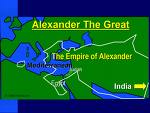Ever wonder how Senate confirmations are taken care of? The U.S. Constitution specifies that the president has the power to appoint certain government officials such as Cabinet secretaries, Supreme Court justices and ambassadors with, as it is stated, “the advice and consent of the Senate.”
So, how does the Senate go about approving or disapproving these appointments? The Senate holds confirmation hearings to look at the candidates and to discuss their merits. First, to nominate someone for a presidential appointment, the executive branch will send word of his decision to the Senate. When the president selects a candidate, the FBI will do a background check on behalf of the executive branch. The candidate also has to fill out oodles of information about their background information, their financial statements and more.
Some low level appointments probably pass through quite easily, but higher level ones take their time. Usually, there is a Senate committee that is evaluating the nomination. They will report back to the rest of the Senate and can make one of four recommendations: report favorably on the nomination, report unfavorably, choose not to report at all, or to take no action.
Once the committee votes on the nomination, the executive branch will be notified. The entire Senate will then confirm or reject the nomination with majority winning. If the Senate committee or the Senate as a whole decides to take no action, then the president has to resubmit the nomination once Congress reconvenes.
 Ever since humans have been organizing themselves into groups, politics has existed. Political entities, or states, have been organized for millenia, and the way borders have been defined throughout this long history made up the most rudimentary aspects of politics. The most basic systems of self-governance, then monarchy developed over a long, bloody history into today’s complex forms of political entities including democratic and communist systems of governance. In conjunction with the development of more complex systems from the basic types has been a parallel definition of a state’s borders from frontier-type boundaries to exact, permanent and definite borders that exist currently.
Ever since humans have been organizing themselves into groups, politics has existed. Political entities, or states, have been organized for millenia, and the way borders have been defined throughout this long history made up the most rudimentary aspects of politics. The most basic systems of self-governance, then monarchy developed over a long, bloody history into today’s complex forms of political entities including democratic and communist systems of governance. In conjunction with the development of more complex systems from the basic types has been a parallel definition of a state’s borders from frontier-type boundaries to exact, permanent and definite borders that exist currently.